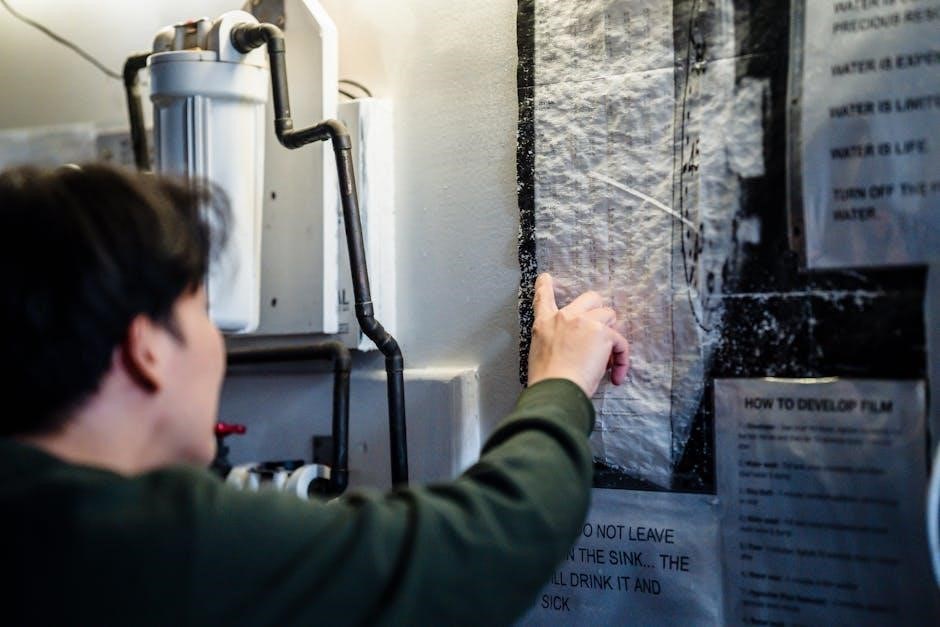unit 6 study guide
Unit 6 Study Guide: Overview
This comprehensive guide navigates key themes across AP courses, encompassing industrialization, government intervention, global impacts, and foundational math/biology concepts.
Focus areas include analyzing the New Deal, calculating deadweight loss, linking industrialization to imperialism, and understanding chromosomal behavior’s consequences.
Essential skills involve evaluating social policies, expressing equations, and mastering migration patterns – all crucial for exam success and deeper understanding.

Welcome to Unit 6! This interdisciplinary study guide bridges AP US History, AP Microeconomics, AP World History, 6th Grade Math, and Biology, offering a holistic learning experience. We’ll explore the transformative period of industrialization – its causes, consequences, and global reach – alongside core economic principles and mathematical foundations.
Prepare to analyze the complexities of the Gilded Age, understand market failures and government interventions like the New Deal, and trace migration patterns spurred by industrial expansion. Furthermore, we’ll delve into chromosomal behavior and its implications. This unit emphasizes critical thinking, analytical skills, and the ability to connect seemingly disparate concepts.
Success in Unit 6 requires a broad perspective and a willingness to synthesize information from multiple disciplines. Utilize this guide to navigate the material effectively and prepare for comprehensive assessments.
Key Themes and Concepts

Central to Unit 6 are several interconnected themes. Industrialization drives significant changes – urbanization, labor movements, and economic shifts – demanding analysis of figures like Carnegie and Rockefeller. Government intervention, exemplified by the New Deal, addresses market failures and societal needs, requiring understanding of concepts like deadweight loss.
Global impact focuses on the link between industrialization and imperialism, alongside the patterns of both coerced and free migration. Mathematical foundations involve expressions, equations, and numerical operations, while biological considerations center on chromosomal behavior and associated disorders.
Mastering these concepts – alongside key laws and historical events – is crucial. The ability to synthesize these themes across disciplines will be paramount for success.

Historical Context: Industrialization & the Gilded Age (AP US History)
This era (1865-1898) witnessed rapid industrial growth, urbanization, and Gilded Age politics, impacting labor, immigration, and the evolving New South.
Industrialization (1865-1898)
The period from 1865 to 1898 marked a transformative shift in American history, driven by unprecedented industrial expansion. Key figures like Carnegie and Rockefeller spearheaded innovations in steel and oil, respectively, fundamentally reshaping the economic landscape.
Technological advancements, including the Bessemer process and the expansion of railroads, fueled this growth, creating new industries and opportunities. However, this progress wasn’t without its challenges. The rise of large corporations led to concerns about monopolies and unfair business practices, prompting debates over government regulation.
Understanding this era requires focusing on the core themes of industrialization, recognizing its impact on American society, and memorizing the pivotal individuals and landmark legislation that defined this period of rapid change and economic consolidation.
Urbanization and its Challenges
Rapid industrialization spurred massive urbanization during the late 19th century, as populations migrated from rural areas to burgeoning cities seeking employment. This influx created significant challenges for urban infrastructure and social systems.
Overcrowding, inadequate sanitation, and widespread poverty became defining characteristics of many urban centers. Tenement housing offered cramped and unsanitary living conditions for the working class, contributing to the spread of disease and social unrest.
Political machines often exploited these conditions, offering assistance in exchange for votes, further complicating urban governance. Studying urbanization requires understanding these complex social and political dynamics, and recognizing the struggles faced by those navigating this period of dramatic demographic shift.
Gilded Age Politics
The Gilded Age (1870s-1900) witnessed pervasive political corruption and intense debates over economic policy. Powerful industrialists like Carnegie and Rockefeller wielded significant influence, often through lobbying and campaign contributions.
Political machines, such as Tammany Hall, dominated city governments, offering patronage and services in exchange for votes, fostering widespread corruption. The era also saw the rise of populism, a political movement advocating for the interests of farmers and laborers against perceived economic elites.
Key legislation, like the Sherman Antitrust Act, attempted to curb the power of monopolies, though its initial effectiveness was limited. Understanding Gilded Age politics requires analyzing the interplay between big business, political corruption, and emerging reform movements.

Economic Principles: Government Intervention (AP Microeconomics)
This section explores market failures, justifying government intervention, and calculating deadweight loss resulting from policies impacting market efficiency and resource allocation.
Market Failures and Intervention
Market failures necessitate government intervention when free markets fail to allocate resources efficiently, leading to suboptimal outcomes. These failures stem from externalities – costs or benefits impacting parties not involved in a transaction – and public goods, which are non-excludable and non-rivalrous.
Intervention strategies include taxes to internalize negative externalities (like pollution), subsidies to encourage positive externalities (like education), and regulations to directly control behavior. Government provision of public goods, such as national defense, is also common.
Analyzing interventions requires understanding their potential benefits and drawbacks. While aiming to correct inefficiencies, interventions can create unintended consequences, distort market signals, and introduce administrative costs. Careful consideration of these trade-offs is crucial for effective policy design.
Deadweight Loss Calculation
Deadweight loss represents the loss of economic efficiency when the equilibrium for a good or service is not Pareto optimal, often due to market distortions like taxes or price controls. It quantifies the reduction in total surplus – the combined benefit to consumers and producers.
Calculating deadweight loss typically involves identifying the change in quantity traded due to the intervention and the resulting loss of consumer and producer surplus. Geometrically, it’s represented by the area of a triangle formed by the original and new quantities and the demand/supply curves.
For example, calculating the deadweight loss at outputs of 70, 50, and 20 requires analyzing the market’s Marginal Social Benefit (MSB) and understanding how intervention alters the equilibrium quantity produced, impacting overall welfare.

Global Impact: Industrialization & Imperialism (AP World History)
Explore connections between industrialization and imperial expansion, analyze coerced and free migration patterns, and evaluate significant changes during the imperial era.
Industrialization and Imperial Expansion Link
Industrialization fueled a dramatic surge in imperial expansion during the 1750-1900 period, creating a powerful, reciprocal relationship. The demand for raw materials – cotton, rubber, minerals – to feed burgeoning industrial factories drove European powers to seek control over resource-rich territories in Africa, Asia, and Latin America.
Furthermore, industrialized nations required new markets to sell their manufactured goods, leading to the imposition of economic and political control over colonized populations. Technological advancements, like steamships and improved weaponry, facilitated this expansion, enabling easier access and domination. This created a system where industrial strength directly translated into imperial power, and imperial possessions, in turn, sustained industrial growth.
Analyzing this link is a key skill for AP World History, requiring students to demonstrate understanding of causation and continuity within this era.
Migration Patterns (Coerced & Free)
Unit 6 necessitates examining diverse migration patterns, differentiating between coerced and free movements during the 1750-1900 timeframe. Coerced migration encompasses the transatlantic slave trade, indentured servitude, and forced labor systems implemented within colonial empires – representing a brutal exploitation of human beings for economic gain.
Conversely, free migration involved individuals voluntarily relocating for economic opportunities, political or religious freedom, or to escape hardship. This included European emigration to the Americas and Australia, as well as internal migrations driven by industrialization and urbanization. Understanding the motivations and consequences of both types of migration is crucial.
Analyzing these patterns reveals significant demographic shifts and cultural exchanges, shaping the global landscape of the period.
Evaluating Imperial-Era Changes

A core skill within Unit 6 is evaluating the relative significance of changes occurring during the imperial era (1750-1900). This demands moving beyond simply identifying changes to assessing their long-term impacts and interconnectedness. Consider political, economic, and social transformations brought about by imperialism, including shifts in global power dynamics and the rise of new ideologies.
Assess the extent to which imperialism fostered economic development versus exploitation, and whether it led to cultural exchange or cultural dominance. Analyze continuities alongside changes – what aspects of pre-imperial societies persisted despite colonial influence?
Effective evaluation requires nuanced historical thinking and the ability to synthesize information from diverse perspectives.

Mathematical Foundations: 6th Grade Math
This section focuses on mastering expressions, equations, and numerical operations, including writing and evaluating expressions with variables, like 5 ‒ .
Expressions and Equations
Sixth-grade mathematics within Unit 6 heavily emphasizes the ability to construct, read, and evaluate expressions. Students will learn to translate word problems into mathematical language, utilizing variables represented by letters to denote unknown quantities.
A core skill involves understanding the order of operations and applying it correctly when simplifying expressions. For instance, the example provided demonstrates expressing “Subtract from 5” as the equation “5 — “. This foundational concept extends to solving simple equations, where the goal is to isolate the variable.
Practice will involve working with various operations – addition, subtraction, multiplication, and division – and recognizing equivalent expressions. Mastery of these skills is crucial for building a strong algebraic foundation for future mathematical studies, preparing students for more complex problem-solving scenarios.
Numerical Operations
Unit 6 in 6th Grade Math reinforces proficiency in fundamental numerical operations – addition, subtraction, multiplication, and division – with a focus on accuracy and efficiency. Students will build upon previously learned skills, applying them to increasingly complex problems involving whole numbers, decimals, and fractions.
A key component is developing fluency in performing these operations mentally, as well as utilizing estimation techniques to verify the reasonableness of answers. Emphasis is placed on understanding the relationships between operations and applying the correct order of operations consistently.
Practical application is central, with students encountering real-world scenarios requiring them to utilize numerical operations to solve problems. This includes interpreting data, making calculations, and drawing conclusions based on numerical evidence, solidifying their mathematical understanding.

Biological Considerations: Chromosomal Behavior
This section explores consequences of chromosomal disorders, detailing examples of abnormalities and their impacts on biological systems and organism development.
Consequences of Chromosomal Disorders
Chromosomal disorders arise from alterations in chromosome number or structure, leading to a diverse range of developmental and physiological consequences. These abnormalities can manifest as genetic conditions impacting physical traits, cognitive abilities, and overall health.
Consequences vary significantly depending on the specific chromosome involved and the nature of the alteration. For instance, aneuploidy – an abnormal number of chromosomes – often results in severe developmental issues. Deletions or duplications of chromosomal segments can also cause distinct syndromes.
Impacts can include intellectual disability, physical abnormalities, increased susceptibility to certain diseases, and reduced life expectancy. Understanding these consequences is crucial for genetic counseling, diagnosis, and potential therapeutic interventions, offering support and informed decision-making for affected individuals and families.
Examples of Chromosomal Abnormalities
Down syndrome (Trisomy 21), a prevalent example, results from an extra copy of chromosome 21, causing characteristic facial features, intellectual disability, and potential heart defects. Turner syndrome (Monosomy X) affects females, stemming from a missing or incomplete X chromosome, leading to short stature and infertility.
Klinefelter syndrome (XXY) impacts males, with an extra X chromosome causing reduced muscle mass, decreased body hair, and potential learning difficulties. Cri du chat syndrome arises from a deletion on chromosome 5, characterized by a high-pitched, cat-like cry in infancy and developmental delays.
These abnormalities demonstrate the profound impact of chromosomal imbalances. Diagnosis often involves karyotyping, allowing for genetic counseling and support services tailored to the specific condition and its associated challenges, improving quality of life.

Social Policy Examples
Examining policies like the New Deal reveals government responses to economic crises, aiming to alleviate suffering and promote societal well-being through intervention.
The New Deal as a Social Policy
President Roosevelt’s New Deal, enacted in response to the devastating Great Depression of the 1930s, represents a landmark example of comprehensive social and economic policy; It wasn’t a singular program, but rather a series of initiatives designed to provide relief, recovery, and reform.
Relief efforts focused on immediate aid to the unemployed and impoverished, through programs like the Civilian Conservation Corps (CCC) and the Works Progress Administration (WPA). Recovery measures aimed to stimulate the economy, while reform initiatives sought to prevent future crises, such as the establishment of the Federal Deposit Insurance Corporation (FDIC).
The New Deal fundamentally altered the relationship between the government and its citizens, expanding the role of the state in providing a safety net and regulating the economy. It remains a subject of ongoing debate, but its impact on American society is undeniable.
Analyzing Social and Economic Policies
Effective analysis of social and economic policies requires a multifaceted approach, considering both intended and unintended consequences. Examining policies like the New Deal necessitates evaluating their impact on various stakeholders – workers, businesses, and different socioeconomic groups.
Key analytical tools include cost-benefit analysis, assessing equity and efficiency, and identifying potential market failures that necessitate government intervention. Understanding the historical context is crucial; the Great Depression profoundly shaped the New Deal’s objectives.
Furthermore, evaluating policy effectiveness demands examining quantifiable data – employment rates, GDP growth, and poverty levels – alongside qualitative assessments of social well-being. A critical lens should also consider long-term sustainability and potential for unintended distortions within the market.


























































































